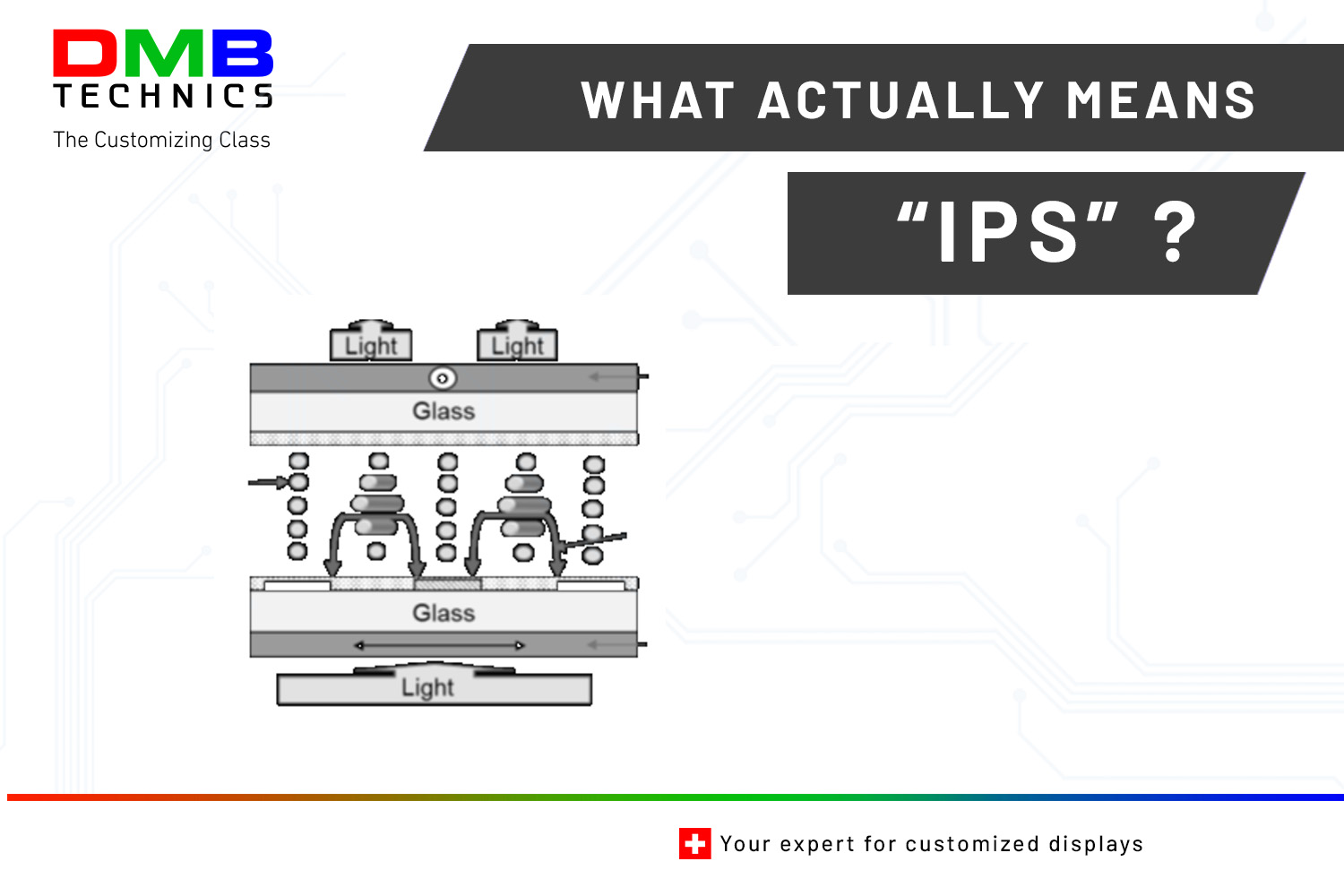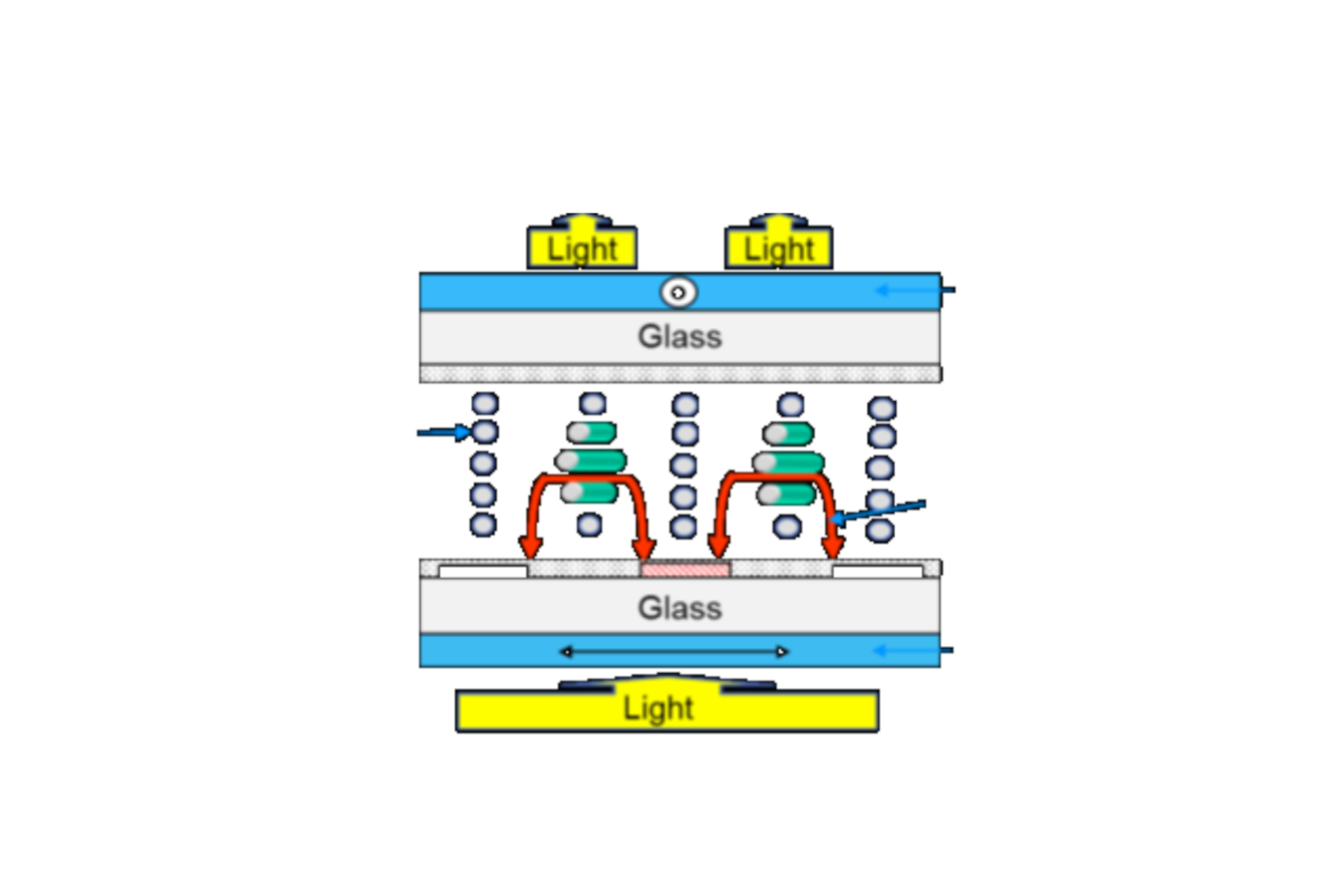(In-Plane Switching) IPS technology works in a similar way to TN technology. The difference is that the LC crystals are arranged in parallel and twisted by 90 ° in the plane. If a voltage is now applied to the two electrodes, which are both located on the backplane, the LC crystals all rotate in one direction. The polarized light can exit again and a pixel appears bright. Because both pixel electrodes are on the backplane, the transparency of the display is lower, so you need a brighter backlight that the display is not too dark. This leads to a higher power consumption. A big advantage is the larger viewing angle of up to 178 ° from all directions, without any significant deterioration in sharpness and contrast.
(In-Plane Switching) IPS technology works in a similar way to TN technology. The difference is that the LC crystals are arranged in parallel and twisted by 90 ° in the plane. If a voltage is now applied to the two electrodes, which are both located on the backplane, the LC crystals all rotate in one direction. The polarized light can exit again and a pixel appears bright. Because both pixel electrodes are on the backplane, the transparency of the display is lower, so you need a brighter backlight that the display is not too dark. This leads to a higher power consumption. A big advantage is the larger viewing angle of up to 178 ° from all directions, without any significant deterioration in sharpness and contrast.



